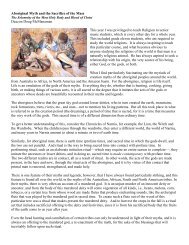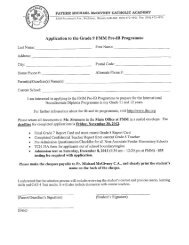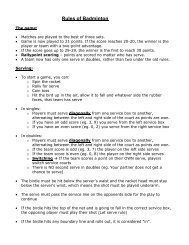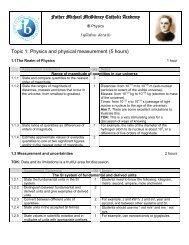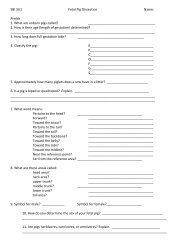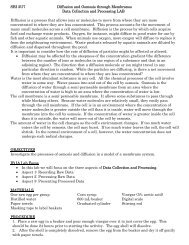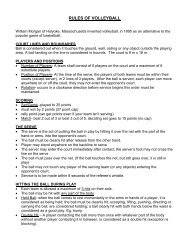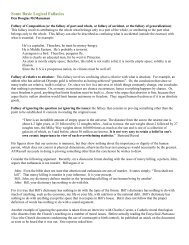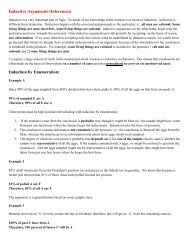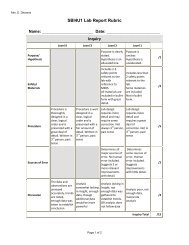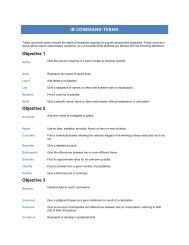Lesson 6: Locating Images in Mirrors
Lesson 6: Locating Images in Mirrors
Lesson 6: Locating Images in Mirrors
You also want an ePaper? Increase the reach of your titles
YUMPU automatically turns print PDFs into web optimized ePapers that Google loves.
• The bra<strong>in</strong> assumes that a light ray travels <strong>in</strong> a straight l<strong>in</strong>e. Therefore, to f<strong>in</strong>d out where<br />
the eye “sees” the image, extend the rays that reach the eye backward until they meet at a<br />
po<strong>in</strong>t beh<strong>in</strong>d the mirror.<br />
• This image is called a virtual image.<br />
Us<strong>in</strong>g Light Rays to locate an image <strong>in</strong> a plane mirror<br />
• By apply<strong>in</strong>g the laws of reflection to rays go<strong>in</strong>g from the object, i.e. by draw<strong>in</strong>g a ray diagram,<br />
we can predict where the image will be and what the image will look like, i.e., it is possible to<br />
predict the characteristics oft the image.<br />
How to draw a ray diagram for an object placed <strong>in</strong> a plane mirror:<br />
1. Draw a l<strong>in</strong>e to represent a mirror, add hatch marks to show the non-reflect<strong>in</strong>g surface of the<br />
mirror.<br />
2. Draw the object as a vertical arrow <strong>in</strong> front of the plane mirror.<br />
3. Draw an <strong>in</strong>cident ray from the tip of the arrow at a 90 ◦ angle. Because this l<strong>in</strong>e is normal to<br />
the mirror, the ____________________. Therefore, the ___________________ _____.<br />
The reflected ray goes directly backward along the same l<strong>in</strong>e as the <strong>in</strong>cident ray.<br />
4. Draw a second <strong>in</strong>cident ray at an angle to the mirror. At the po<strong>in</strong>t where the <strong>in</strong>cident ray<br />
hits the mirror, draw a normal. Measure the angle of <strong>in</strong>cidence with a protractor. Us<strong>in</strong>g the<br />
Law of reflection that the angle of reflection is equal to the angle of <strong>in</strong>cidence, draw the<br />
reflected ray.<br />
5. Us<strong>in</strong>g a dashed l<strong>in</strong>e, extend both the reflected rays beh<strong>in</strong>d the mirror until they cross one<br />
another at the same po<strong>in</strong>t, i.e. at the po<strong>in</strong>t where they meet – this po<strong>in</strong>t is the image of the<br />
arrow tip.<br />
* _____________________________________.



